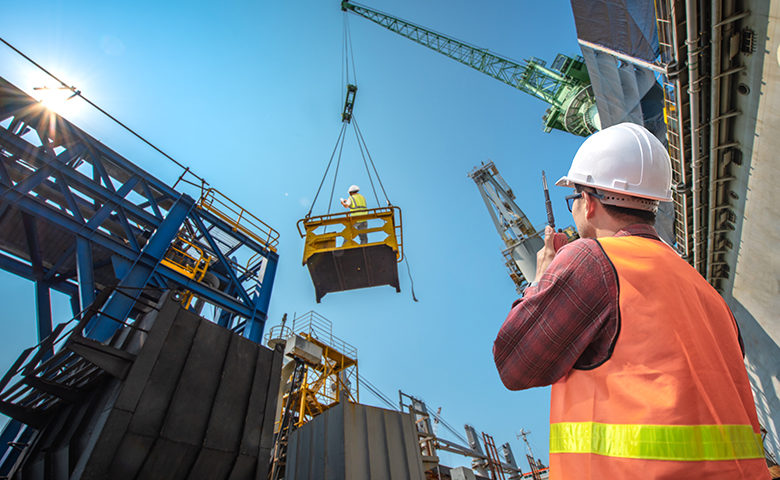Refusing work may feel out of character for some people. Growing up, many of us are taught there’s value in respecting authority and in getting a job done. So when it comes to the workplace, employees often believe that their employer has their best interests in mind and that their sole focus should be on doing the work they were hired to do. But sometimes companies can lose sight of safety when they’re zeroed in on things like tight deadlines, production quotas or other things that contribute to the bottom line.
Reporting dangerous, unethical or illegal acts in the workplace should be a no-brainer, but the reprisal that has traditionally been associated with doing so has some workers questioning whether or not it’s worth it to refuse to work or flag unsafe conditions. In the U.S. there are monetary reward programs for whistleblowers to encourage them to report wrongdoing. In fact, OSHA has more than twenty whistleblower protection laws to prohibit retaliation against employees who complain about unsafe conditions under the Act.
What we know
Safety is a right. It’s a legal requirement for employers to provide workers with a safe place to work, and workers may request information about OSHA standards if they aren’t sure about what they’re entitled to. The reality is that workers can refuse work any time they feel it’s unsafe—this is true at all levels and pertains to anyone that’s on the job site. Another expected behavior from all levels that doesn’t happen as often as it should is intervening when unsafe acts are witnessed.
Most people know they have the right to refuse unsafe work. But factors like fear of reprisal, the concern of ruining their personal reputation (which could result in future harassment at work) or not knowing exactly what they can refrain from doing all contribute to workers failing to refuse an unsafe act or report an injury.
How to refuse/stop work
Every employee has the responsibility to report unsafe work. A job hazard analysis (JHA) should be completed and communicated before work commences to identify any potential threats. But a lot of things can happen outside of that JHA that may require work to be stopped, including a change in conditions or scope of work, a near-miss encounter, or a lack of understanding or missing information.
Worker responsibility
If an unsafe work practice is observed, you must report it to your supervisor immediately, state the reason why you’re refusing to complete the task or are intervening on someone else’s behalf, and then ask them to eliminate the danger. A reasonable person must agree that a real danger exists. If the employer fails to take corrective action, make sure your intent to stop work due to unsafe acts is clear. You can stop work in good faith but you cannot walk off the job site unless dismissed by your employer. If appropriate corrective action is not taken, you may file a complaint with OSHA concerning the hazardous working condition or call (800) 321-OSHA immediately to report imminent danger.
Management responsibility
If all parties agree that the condition is unsafe to proceed without modifications, an investigation must take place. Similar to an incident investigation, a root cause analysis is the best course of action in this scenario. Once corrective actions have been implemented and it’s safe to resume work, management will notify all employees and contractors what resolution was implemented and that it’s safe to return to work. Communication is important after an incident is brought to light. Management should publish incident details regarding the stoppage of work, outlining the issue, any corrective actions taken and any changes in plans moving forward.
Safety department responsibility
Ensure that all employees are trained in stop-work procedures and know their rights when it comes to safety. The safety department should be available to help with the investigation, ensure the right documentation is in place and corrective actions are enacted accordingly. If OSHA comes on-site to perform an imminent danger inspection, a member of the safety team should accompany them. The safety department is also responsible for monitoring the situation after the corrective actions are implemented to ensure it doesn’t reoccur and that any root causes that were identified receive the best possible actions. The safety department will also follow up on any additional training that is required.
It’s important for everyone to know their rights, responsibilities and roles when it comes to unsafe work and whistleblowing. It goes back to the values you learned as a kid—unsafe work should be reported and corrected because it’s the right thing to do. Everyone deserves a safe place to work, and reporting dangerous conditions will not only keep you safe but it will positively impact others on the job site.
Organizational framework
The responsibilities of the workers, managers and the safety department are only effective if they are all happening together in a systematic way with each part improving the others. Workers are more likely to report an unsafe condition if they have seen how management has responded to other reports in the past. Management will only be able to address situations if employees report them. This requires a formal structure and many related conditions like a positive safety climate, strong communication skills and a shared understanding of human factors.

